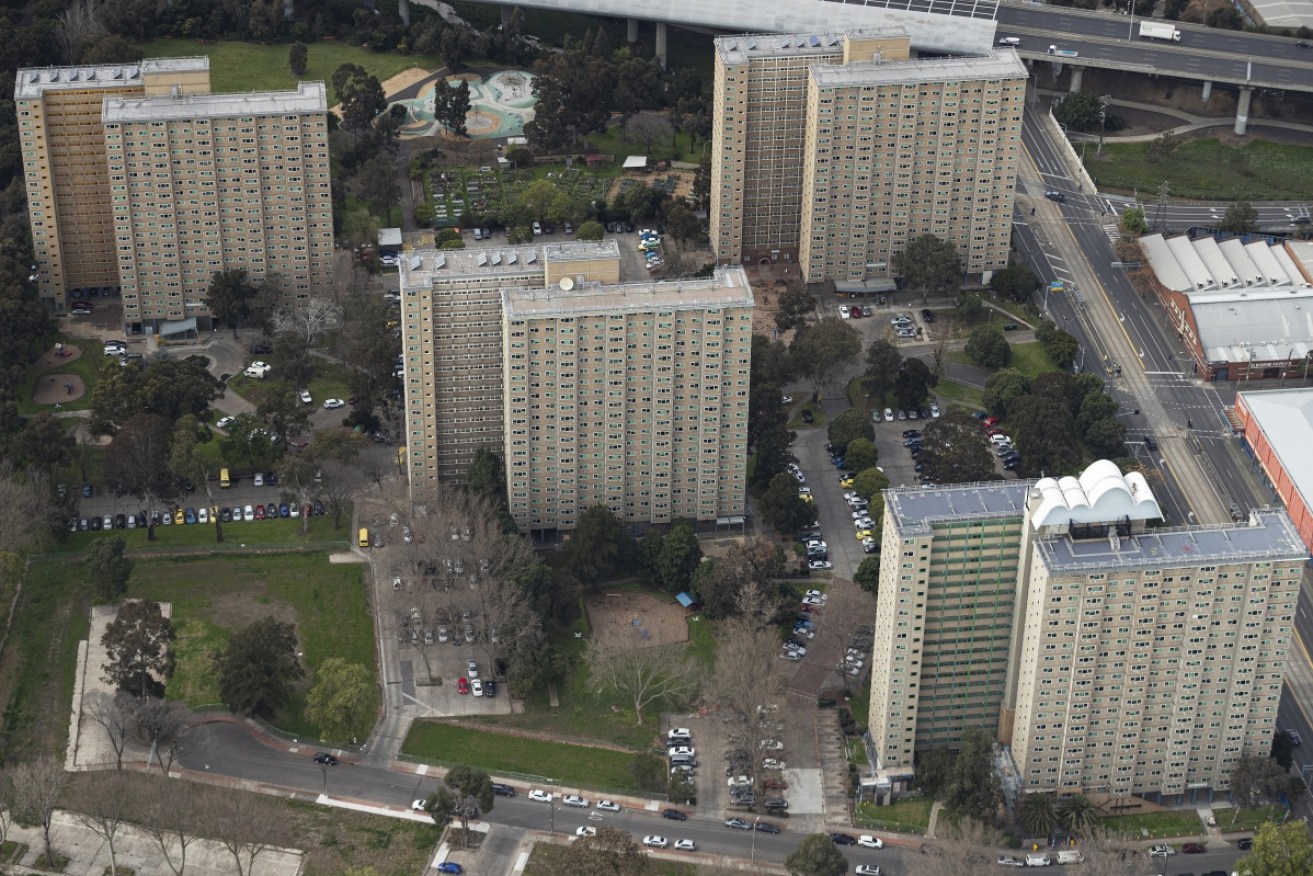When it comes to housing, decentralisation shows that going up isn’t the only option


Public housing residents in Victoria have launched a class action against redevelopment plans. Photo: Getty
The people of Sydney received an early Christmas present when NSW Premier Chris Minns announced a plan to fast track the construction of three- to four-storey townhouse blocks.
Finally, a politician who understands that the developer-led push for more high-rise apartment complexes is not the only way to deal with the housing shortage.
Medium-density development is a smart move, but it will not provide a complete solution.
Australia isn’t a tiny island like Hong Kong where ‘going up’ is the only option.
We have about the same land mass as the continental United States, where 350 million people (14 times our population) live in 300 cities, most of which are smaller than Adelaide or Hobart.
People across the world live in cities with high densities. Mostly, I suspect, because they have no choice.
In many places, like New York, the majority rent because ownership is out of their financial reach. It’s worth noting that in cities where apartment living and renting is the norm there are laws that cap rents and limit unilateral evictions.
By watching any one of numerous home renovation programs on television you’ll notice that a comparable house can be bought in most American cities for less than half the price of a similar dwelling in Melbourne or Sydney.
The Whitlam vision
Fifty years ago, the Whitlam government foresaw the problem of overcrowding in our major capitals and launched an innovative decentralisation plan.
As with many of his other policies – most notably, Medibank and what is now the NDIS – Gough was ahead of his time.
Lack of modern communications technology was the main obstacle facing its implementation. Back then we didn’t even have fax machines (Google ‘fax’ for those unfamiliar with this clunky technology). Phone calls between towns and cities were charged by the minute and were very expensive.
The internet has solved the communications problem and COVID has shown us the way.
We no longer need to corral white collar workers in towering office blocks in soulless central business districts – requiring them to spend hours each day commuting to and from work.
It’s time to revisit the Whitlam decentralisation plan. These numbers tell the story.
Nationwide, house prices have risen 8.1 per cent over the past 12 months. The increase in the ‘combined capitals’ was 9.3 per cent but in the ‘combined regions’ it was only 4.4 per cent.
Decentralisation critics in regional areas complain that more people moving out will force prices up to their disadvantage and that of their children. But of course the same economic dynamics apply across the country – it’s all about supply and demand.
It’s much cheaper to build more houses in the regions because the killer cost in congested cities is the ‘‘unimproved land value’’, which is artificially inflated by the lack of new blocks on which to build.
Critics aside, decentralisation is already happening.
In recent years we’ve seen a net outflow from our capital cities.
According to a Commonwealth Bank/Regional Australia Institute survey, half of those leaving are millennials. They will soon be a major political force.
Any government that ignores this reality and fails to provide improved services in the regional centres to which they are moving risks an electoral backlash.

Not everyone likes apartment living – and families often need room to grow. Photo: Getty
Family pressure
Of course, many people like apartment living – but many others don’t.
We must provide options for differing needs and wants.
Medium density (as proposed by Chris Minns) is a good compromise. Hopefully empty nesters who wouldn’t cop a high-rise apartment will happily move into a townhouse – thus freeing up their big houses for young families.
We need a national decentralisation plan that encourages businesses to move jobs to where people who’d prefer a house can afford to live.
There is plenty of land in regional areas unsuitable for agriculture but fine for housing estates. Naturally, it makes sense to stick to the coast or close to rivers where water is available.
I suspect most single twenty-somethings with emerging careers and a vibrant social life will see an apartment as the best option for now.
But things change when you have a family. Not sure how I’d have managed with two teenage sons and a dog living in an apartment.
Like so many issues where there is intergenerational angst, the housing issue prompts some amazingly terse exchanges on social media.
Best if we cease with the dismissive responses to propositions we don’t like, and agree that the best way forward is to provide a range of options to suit our varying preferences.
We need to ensure that it’s people who choose how and where they live, not politicians or those with vested interests – like property developers.
The danger is that we end up creating a future in which only people in high-income families have the option to own a house.
Lower-income families could be forced into renting – and in many cases an apartment might be all they can afford.
It’s worth noting that while it’s true Boomers have done comparatively well, the pre-Boomer generation was the first in which universal home ownership was a realisable aspiration.
Let’s not risk going backwards when there are multiple options to take us forward to a better place.
Laurie Patton is a journalist and public interest advocate now living on the NSW south coast. He is notable for his campaigns for #BetterBroadband and wide-ranging whistleblower laws








